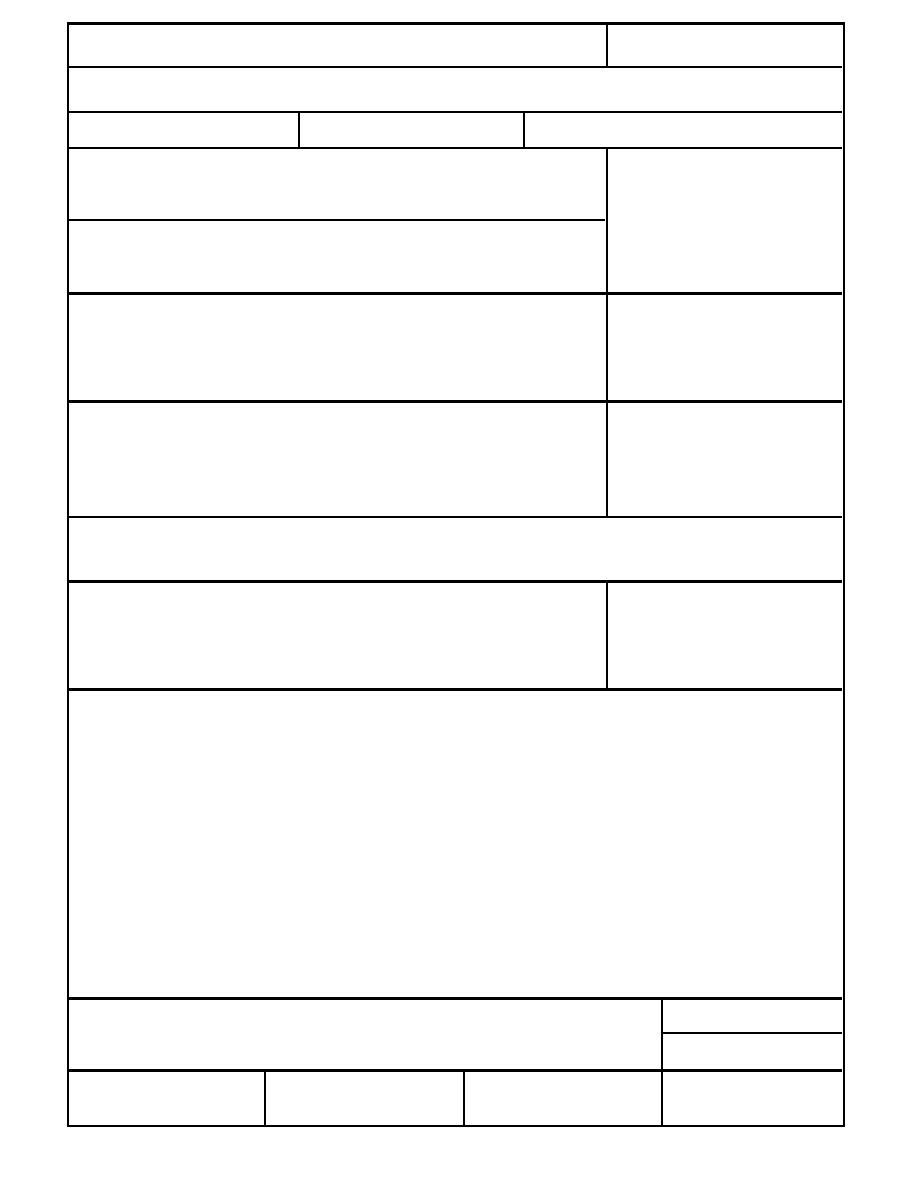
Form Approved
REPORT DOCUMENTATION PAGE
OMB No. 0704-0188
Public reporting burden for this collection of information is estimated to average 1 hour per response, including the time for reviewing instructions, searching existing data sources, gathering and
maintaining the data needed, and completing and reviewing the collection of information. Send comments regarding this burden estimate or any other aspect of this collection of information,
including suggestion for reducing this burden, to Washington Headquarters Services, Directorate for Information Operations and Reports, 1215 Jefferson Davis Highway, Suite 1204, Arlington,
VA 22202-4302, and to the Office of Management and Budget, Paperwork Reduction Project (0704-0188), Washington, DC 20503.
1. AGENCY USE ONLY (Leave blank)
2. REPORT DATE
3. REPORT TYPE AND DATES COVERED
June 1998
4. TITLE AND SUBTITLE
5. FUNDING NUMBERS
Frost-Shielding Methodology and Demonstration for
Shallow Burial of Water and Sewer Lines
6. AUTHORS
Barry A. Coutermarsh and David L. Carbee
7. PERFORMING ORGANIZATION NAME(S) AND ADDRESS(ES)
8. PERFORMING ORGANIZATION
REPORT NUMBER
U.S. Army Cold Regions Research and Engineering Laboratory
72 Lyme Road
CRREL Report 98-4
Hanover, New Hampshire 03755-1290
9. SPONSORING/MONITORING AGENCY NAME(S) AND ADDRESS(ES)
10. SPONSORING/MONITORING
AGENCY REPORT NUMBER
Office of the Chief of Engineers
Washington, D.C. 20314-1000
For conversion of SI units to non-SI units of measurement consult Standard Practice for Use of the
11. SUPPLEMENTARY NOTES
International System of Units (SI), ASTM Standard E380-93, published by the American Society for Testing and Materials,
1916 Race St., Philadelphia, Pa. 19103.
12a. DISTRIBUTION/AVAILABILITY STATEMENT
12b. DISTRIBUTION CODE
Approved for public release; distribution is unlimited.
Available from NTIS, Springfield, Virginia 22161.
13. ABSTRACT (Maximum 200 words)
Burying utility lines below the maximum frost penetration depth can be expensive when difficult digging
conditions are encountered or where existing obstacles make the desired depth expensive to achieve. Protecting
the pipeline from freezing by adding an insulation shield would allow a shallow burial option. This can reduce
excavation costs or avoid the relocation costs of moving the pipeline to an unobstructed location. A finite-element
program was developed to model various subterranean heat-flow situations. It was used to design frost shields
for a water line in northern New Hampshire through a 4-year Construction Productivity Advancement Research
(CPAR) project with the City of Berlin Water Works, the United States Army Cold Regions Research and Engineer-
ing Laboratory (CRREL), and the OwensCorning Specialty and Foam Products Division as partners. Test sites
utilizing shielded pipes were constructed, and simple techniques were explored to expedite the installation of the
frost shields. Temperatures at the test sites were recorded both to verify the numerical model and to monitor the
shield performance. Overall, the numerical model was capable of very good temperature predictions and pro-
vided valuable guidance for the frost shield design.
The industry partner participant in the CPAR project, OwensCorning Specialty and Foam Products Division,
intends to market the concept of frost shielding water and sewer lines to state, city, county, and municipal agen-
14. SUBJECT TERMS
15. NUMBER OF PAGES
23
Frost shielding
Insulation
Pipes
Surface icing
16. PRICE CODE
17. SECURITY CLASSIFICATION
18. SECURITY CLASSIFICATION
19. SECURITY CLASSIFICATION
20. LIMITATION OF ABSTRACT
OF REPORT
OF THIS PAGE
OF ABSTRACT
UNCLASSIFIED
UNCLASSIFIED
UNCLASSIFIED
UL
Standard Form 298 (Rev. 2-89)
NSN 7540-01-280-5500
Prescribed by ANSI Std. Z39-18
298-102




 Previous Page
Previous Page
